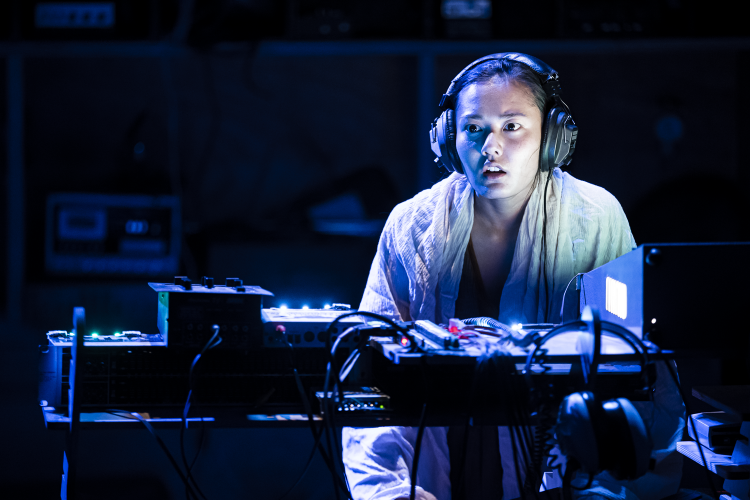One of the pleasures of attending fringe theatre is discovering unexpected troves of art tucked away in underground spaces. A prime example is The New Ohio Theatre, which, to judge by the imposing vault door, once concealed wealth of a more mundane character. It would be hard to imagine a better setting for The Listening Room—an underground outpost of a dying civilization whose demise owes partly to the accumulation of capital. Or for “The Listening Room”, an incendiary play by Canadian playwright Michaela Jeffery now enjoying its US premiere at the hands of Nylon Fusion.
First impressions are important, and co-directors Ivette Dumeng and Lori Kee know how to set the right tone. The atmosphere alone prepares us for the post-apocalypse. The set by Raye Levine makes full use of the unique space, even incorporating the building’s massive columns into the design. There are walls of salvaged crates, military-style bunk beds, inaccurate maps of the cosmos, analog devices bristling with wires and diodes—all of it glowing menacingly beneath a subterranean sky by lighting designer Gilbert Lucky Pearto. The thoughtful play of light and form creates an appropriate sense of clutter without overwhelming the eye or hemming in the actors.
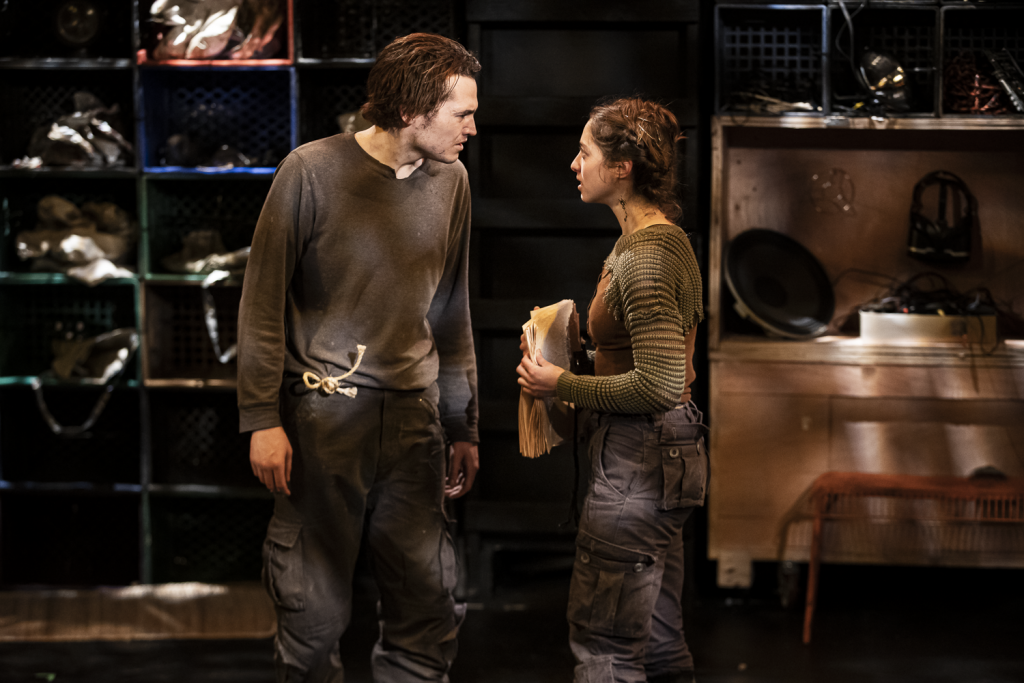
And the actors are a lively, gifted lot. Sara Rahman is utterly convincing as Squeak, a blind girl who traverses the desert in a quest to join the Listeners, a band of youths tasked with scanning the sky for radio transmissions from beyond. Their ranks include Matthew Carrasco’s sceptical yet idealistic Fayette, who reluctantly shows Squeak the ropes, and Rouke and Lanolin, played by Taylor Petracek and Alex Chernin with the kind of love-hate chemistry that makes for a good buddy cop movie. But the highlight is their fearless leader Marcus, played by an English actor who, as the Yanks say, knocks it out of the park.
Now I’m hardly impartial where things British are concerned, but fervent political rhetoric and an English accent simply go well together. Perhaps I’ve spent one too many Sundays at Speaker’s Corner. Or perhaps Tim Palmer is just that good. All I can say for certain is that his rhetoric raises goosebumps. And when word arrives of his impending trial before the council, his transformation from smirking, self-assured revolutionary to scared little boy is entirely believable.
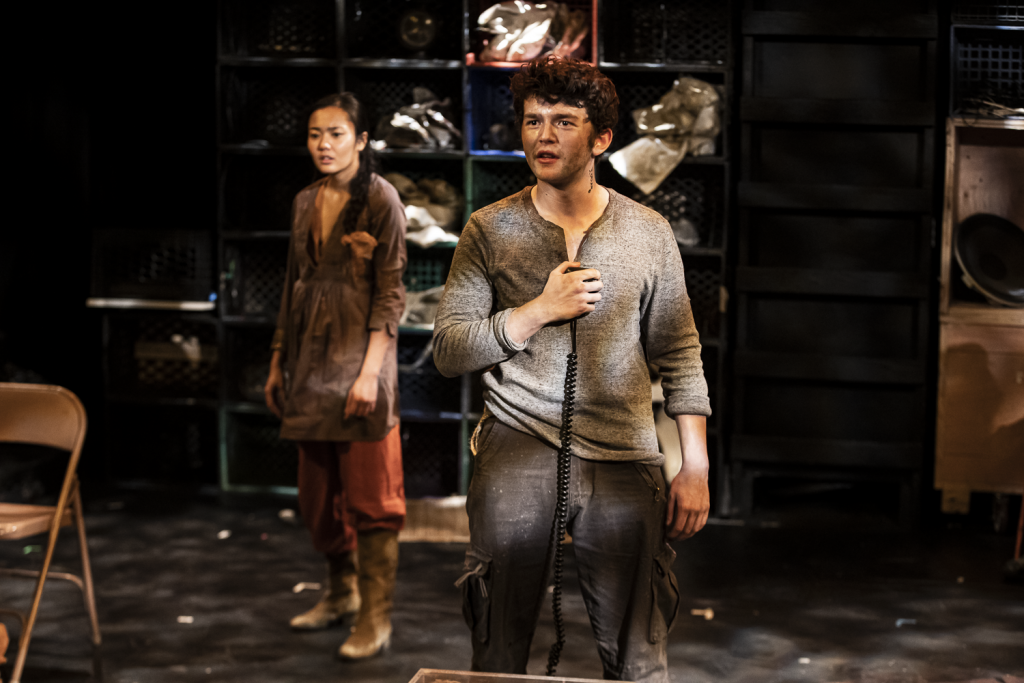
But the cast list would be incomplete without mentioning Sound, a crucial sixth character in a play about listening. Sound designer Bryan James Hamilton has an ear for subtle, layered effects. He draws on his background as an actor as well as advice from veteran sound designer Andy Evan Cohen to create an aural presence that settles around the characters like Stephen King’s “The Mist”, ultimately tearing them apart.
Nor is the violence in “The Listening Room” purely auditory. Extended, expertly choreographed fight sequences by former Airborne Ranger Randall Rodriguez spill across the stage and overflow into the wings. Personally I’m no fan of stage combat, not for reasons of pacifism (Speaker’s Corner again), but because it releases tension rather than letting it build. And because it never feels quite real. Even when it’s disturbingly realistic, as in this case, I find myself worrying more about the actors than about the characters, which takes me out of the story.
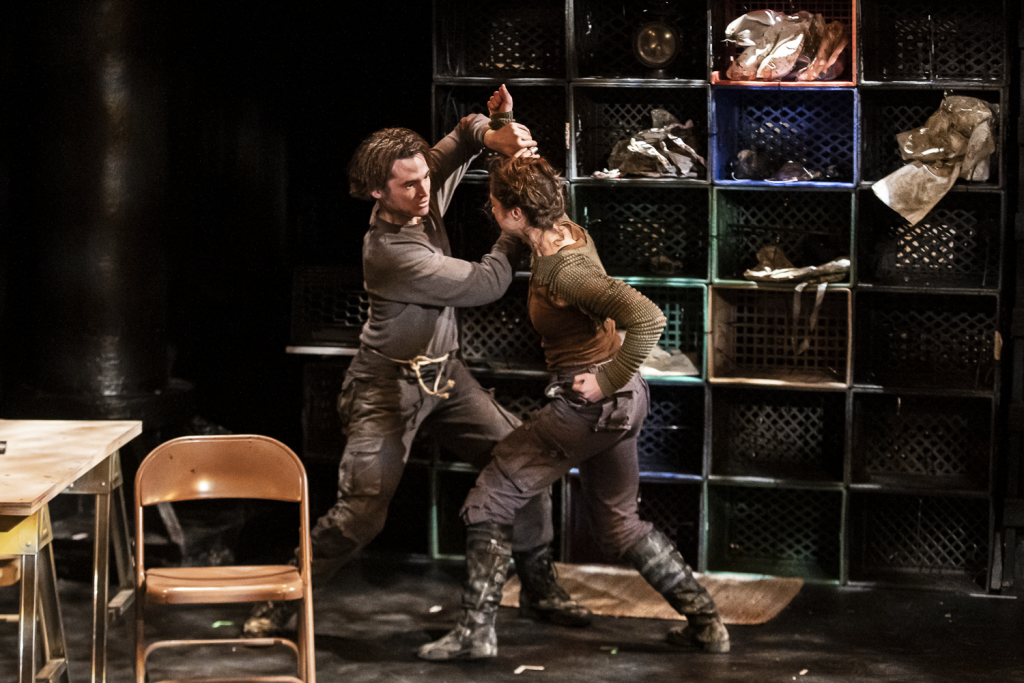
So much for fisticuffs. For the rest, directors Kee and Dumeng do a fine job of combining disparate elements into something coherent, entertaining and sometimes moving. They put a wealth of ideas to work for the text. And it was really only the text that left me with mild reservations.
It may have been a matter of subverted expectations. The synopsis promises a story about a group that listens to old Earth transmissions rebounding off stars—a picturesque premise suggesting all kinds of possibilities. Yet there is not a single historic broadcast, old advert or radio show to prompt speculation among the Listeners as to who we were and why our civilisation collapsed. Instead they spend much of their time debating the actions of a council we never meet nor have any reason to care about, save as it relates allegorically to our current government.
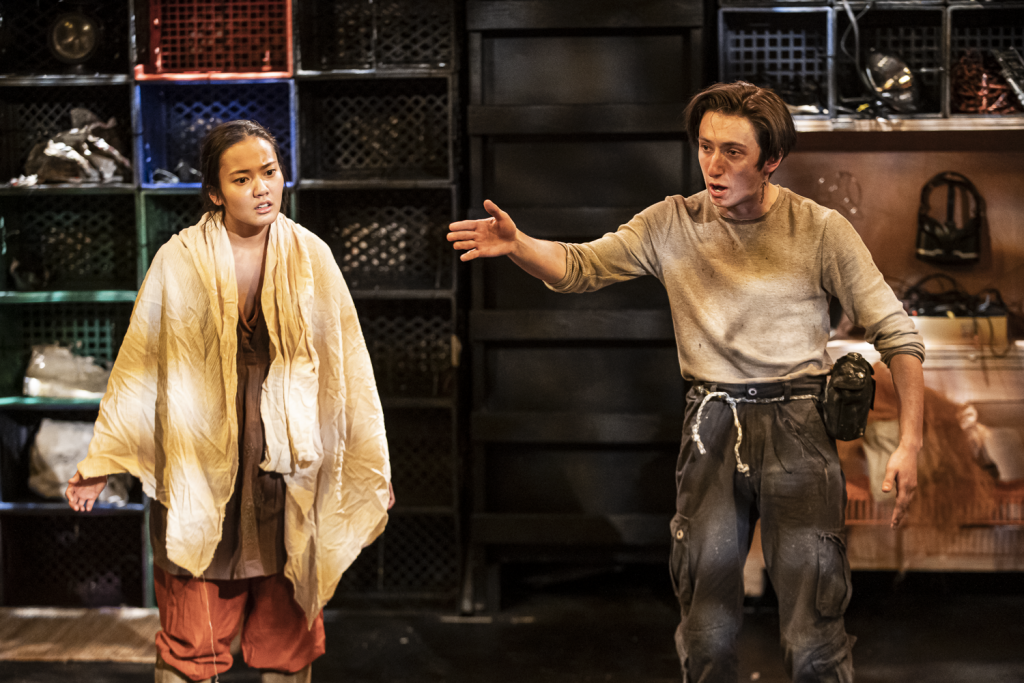
Which brings me to my second reservation. The joy of allegory is the joy of discovery. Having everything explained to us deprives us of that joy and makes us feel talked down to from a soapbox (Speaker’s Corner a third and final time). It also weakens the characters by reducing them to mouthpieces for the author’s ideas. And worst all—unless estrangement is the goal—it takes us out of the story.
Which isn’t to say “The Listening Room” is guilty on both counts. The infractions were minor and largely a matter of personal preference. The script as a whole is very well written. The characters are clearly drawn and distinctive, the dialogue pops and crackles and there are some fine poetic passages and rousing speeches. I strongly suggest visiting the old vault of The New Ohio this December to form your own opinion. You won’t regret you came.
And while you’re waiting in the lobby, why not try your ear at cracking the vault? By my reckoning, the odds are 1×10^8 or one in a hundred million. Don’t you wonder what’s inside?
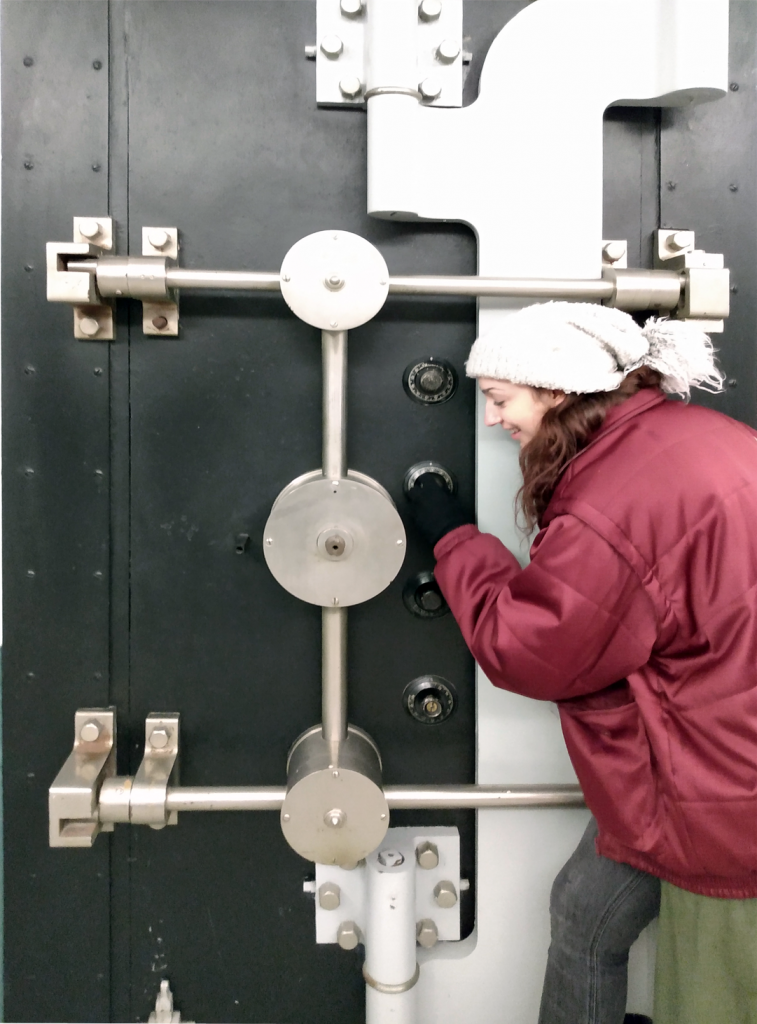
“The Listening Room” is running at The New Ohio Theatre through December 21. For more information visit nylonfusion.org.

